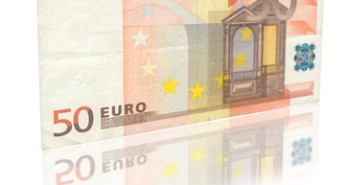EUR/USD continues to move higher, after posting gains on Wednesday. The pair is testing the 1.33 line in Thursday’s European session. The markets haven’t had much to look at so far this week, with no major releases out of the Eurozone or the US. That will change on Thursday, as ECB chair Mario Draghi delivers remarks in Latvia and the US releases the all-important Unemployment Claims. Eurozone Industrial Production looked awful, hitting a ten-month low.
Here is a quick update on the technical situation, indicators, and market sentiment that moves euro/dollar.
EUR/USD Technical
- In the Asian session, EUR/USD was quiet, touching a high of 1.3324 late in the session and consolidating at 1.3310. The pair is showing little change in the European session.
Current range: 1.3300 to 1.3350.
Further levels in both directions:Â 
- Below: 1.33, 1.3240, 1.3175, 1.31, 1.3050 and 1.30.
- Above: 1.3350, 1.3415, 1.3450, 1.3520, 1.3590 and 1.37.
- 1.33 is under strong pressure on the downside. 1.3240 is next.
- 1.3350 is providing weak resistance. 1.3415 follows.
EUR/USD Fundamentals
- 6:00 German WPI. Exp. 0.2%, Actual -0.6%.
- 6:45 French CPI. Exp. 0.5%, Actual 0.5%.
- 8:00 ECB Monthly Bulletin.
- 8:00Â Italian Industrial Production. Exp. 0.3%, Actual -1.1%.
- 9:00 Eurozone Industrial Production. Exp. -0.1%, Actual -1.5%.
- 11:40 ECB President Mario Draghi Speaks.
- 12:30 US Unemployment Claims. Exp. 332K.
- 12:30 US Import Prices. Exp. 0.6%.
- 13:00 FOMC William Dudley Speaks.
- 14:30 USÂ Natural Gas Storage. Exp. 65B.
- 17:00 US 30-year Bond Auction.
- 18:00 US Federal Budget Balance. Exp. -155.3B.
* All times are GMT.
For more events and lines, see the Euro to dollar forecast.
EUR/USD Sentiment
- Industrial production slumps: Thursday’s Eurozone Industrial Production releases were very disappointing. Eurozone Industrial Production dropped from 0.7% in July to -1.5% in August, well below the estimate of -0.1%. This was the worst showing since October 2012. Italian Industrial Production also was a bust, declining -1.1% in August after a 0.3% gain in July. The markets had expected a gain of 0.3%. We could see the euro take a hit if manufacturing and industrial numbers don’t improve.
- Latvia welcomes Draghi: ECB head Mario Draghi is in Latvia, where he will deliver remarks at the Bank of Latvia’s Economic Conference. The timing of the trip is not coincidental, as the Baltic country is set to join the Eurozone on January 1, 2014. The small country of just 2.4 million will be the 18th member of the zone. Latvia’s economy has been doing well, but public support for adopting the euro has been weak, with fears of rising prices and Eurozone contagion.
- Markets eye US Unemployment Claims: With recent US employment numbers dipping, the upcoming Unemployment Claims release takes on added significance. Last week, Unemployment Claims and Non-Farm Payrolls fell short of expectations, and JOLTS Job Openings didn’t look any better earlier this week. The markets continue to speculate about when the Fed will press the tapering trigger. There’s a strong likelihood that it will happen before the end of the year, but we’re unlikely to see such a move before the US posts stronger employment numbers.
- Syrian strike on hold: The Syrian crisis has taken on a new twist, as US military action, which seemed a foregone conclusion in late August, is currently on the backburner. The US and Russia are spearheading intensive efforts to come up with a diplomatic solution to the crisis. Under the proposed plan, Syria would hand over its entire arsenal of chemical weapons to the international community to be destroyed. Speaking on US television earlier in the week, President Obama said that he would delay any military action as long as a diplomatic solution was possible, but that a strike against Syria was still on the table. If the diplomatic efforts gain momentum and the crisis eases, we could see the safe-haven dollar lose ground.
- Confidence on the rise in Eurozone: Confidence indicators out of the Eurozone have been looking up and the Eurozone Sentix Investor Confidence continued the positive trend earlier in the week. The indicator shot up from -4.9 points in July to a solid +6.5 points in August. Remarkably, this was the first reading above zero since August 2011, indicative of entrenched pessimism among investors over the past two years. If other confidence indicators follow suit with positive readings, the euro could gain ground.
Further reading:
- EURUSD Could Be Forming A Major Turning Point For The Year-Elliott Wave Analysis
- Forex Analysis:Â EUR/JPY Continues Consolidation within Clear Triangle Pattern



